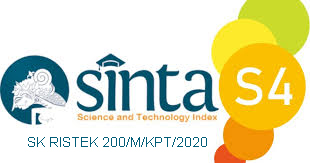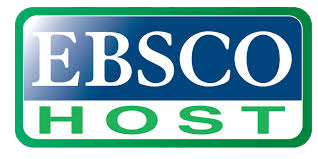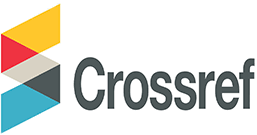UI/UX Using Design Thinking Method in Clarient Hotel Application Design
Abstract
Keywords
Full Text:
PDFReferences
A. A. Krishnavarty, M. Defriani, and T. I. Hermanto, “UI/UX Design for Language Learning Mobile Application Chob Learn Thai Using the Design Thinking Method,” SinkrOn, 2022, doi: 10.33395/sinkron.v7i3.11585.
N. Rösch, V. Tiberius, and S. Kraus, “Design thinking for innovation: context factors, process, and outcomes,” Eur. J. Innov. Manag., 2023, doi: 10.1108/EJIM-03-2022-0164.
K. Roth, D. Globocnik, C. Rau, and A. K. Neyer, “Living up to the expectations: The effect of design thinking on project success,” Creat. Innov. Manag., 2020, doi: 10.1111/caim.12408.
C. Y. Huang, L. Y. Tsai, C. H. Chung, F. F. Shih, and Y. M. Wang, “The effect of design thinking approach in interprofessional education programme of human sexuality course: A quasi-experimental design,” Nurs. Open, 2023, doi: 10.1002/nop2.1363.
I. Darmawan, M. S. Anwar, A. Rahmatulloh, and H. Sulastri, “Design Thinking Approach for User Interface Design and User Experience on Campus Academic Information Systems,” Int. J. Informatics Vis., 2022, doi: 10.30630/joiv.6.2.997.
M. Pande and S. V. Bharathi, “Theoretical foundations of design thinking – A constructivism learning approach to design thinking,” Think. Ski. Creat., vol. 36, no. February, p. 100637, 2020, doi: 10.1016/j.tsc.2020.100637.
S. Milda Puspita and N. Apriyanti, “The UI/UX Design with Design Thinking Method for The University Complaint Website,” Inf. Technol. Int. J., 2023, doi: 10.33005/itij.v1i1.2.
C. Jiang and Y. Pang, “Enhancing design thinking in engineering students with project-based learning,” Comput. Appl. Eng. Educ., 2023, doi: 10.1002/cae.22608.
B. J. M. Robertson, “Combining Design Thinking and Systems Engineering to Improve Customer Outcomes,” Des. J., 2020, doi: 10.1080/14606925.2020.1822046.
E. Coleman, T. Shealy, J. Grohs, and A. Godwin, “Design thinking among first-year and senior engineering students: A cross-sectional, national study measuring perceived ability,” J. Eng. Educ., 2020, doi: 10.1002/jee.20298.
T. Buphate and R. H. Esteban, “Using Ideation Discussion Activities in Design Thinking to Develop EFL Students’ Speaking and Critical Thinking Abilities,” Learn J. Lang. Educ. Acquis. Res. Netw., 2022.
R. Bender-Salazar, “Design thinking as an effective method for problem-setting and needfinding for entrepreneurial teams addressing wicked problems,” J. Innov. Entrep., 2023, doi: 10.1186/s13731-023-00291-2.
W. Chanpuypetch and D. Kritchanchai, “A design thinking framework and design patterns for hospital pharmacy management,” Int. J. Healthc. Manag., 2020, doi: 10.1080/20479700.2017.1389479.
C. Wrigley, G. Mosely, and M. Mosely, “Defining Military Design Thinking: An Extensive, Critical Literature Review,” She Ji, 2021, doi: 10.1016/j.sheji.2020.12.002.
N. D. Fila, S. McKIlligan, and K. Guerin, “Design thinking in engineering course design,” in ASEE Annual Conference and Exposition, Conference Proceedings, 2018. doi: 10.18260/1-2--30271.
L. M. Simon and D. C. Cox, “The role of prototyping in mathematical design thinking,” J. Math. Behav., 2019, doi: 10.1016/j.jmathb.2019.100724.
DOI: https://doi.org/10.31326/jisa.v8i1.2293
Refbacks
- There are currently no refbacks.
Copyright (c) 2025 Dimas Setiawan, Muhammad Ragil Shafa Abdur Rafi Dalhats

This work is licensed under a Creative Commons Attribution-ShareAlike 4.0 International License.
JOURNAL IDENTITY
Journal Name: JISA (Jurnal Informatika dan Sains)
e-ISSN: 2614-8404, p-ISSN: 2776-3234
Publisher: Program Studi Teknik Informatika Universitas Trilogi
Publication Schedule: June and December
Language: English
APC: The Journal Charges Fees for Publishing
Indexing: EBSCO , DOAJ, Google Scholar, Arsip Relawan Jurnal Indonesia, Directory of Research Journals Indexing, Index Copernicus International, PKP Index, Science and Technology Index (SINTA, S4) , Garuda Index
OAI address: http://trilogi.ac.id/journal/ks/index.php/JISA/oai
Contact: jisa@trilogi.ac.id
Sponsored by: DOI – Digital Object Identifier Crossref, Universitas Trilogi
In Collaboration With: Indonesian Artificial Intelligent Ecosystem(IAIE), Relawan Jurnal Indonesia, Jurnal Teknologi dan Sistem Komputer (JTSiskom)
JISA (Jurnal Informatika dan Sains) is Published by Program Studi Teknik Informatika, Universitas Trilogi under Creative Commons Attribution-ShareAlike 4.0 International License.


















